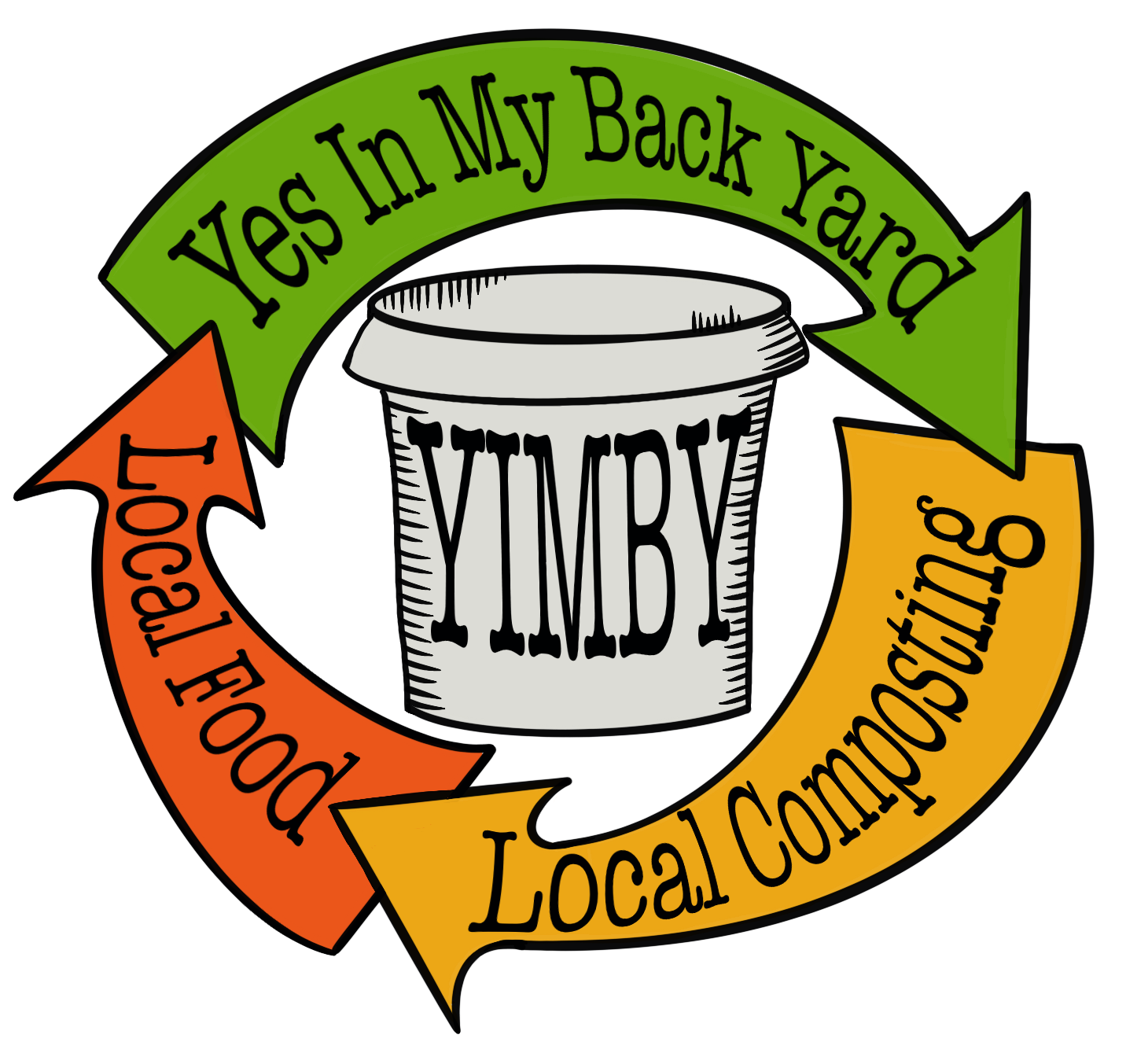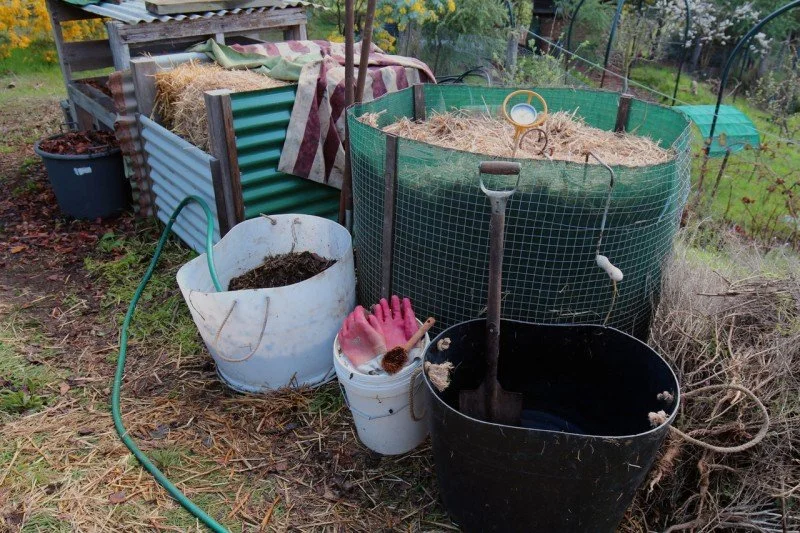Setting up for success
For many people the compost pile is as far away from the house as it can be, tucked right down in a back corner of the garden. Unfortunately, most of the things we need to make good compost, like garden tools and access to water, can be out of reach in these neglected corners.
Let’s have a look at what a well set-up composting area might look like and how having what we need easily at hand might make our composting sessions something we look forward to rather than avoid.
Access to a hose and a trigger nozzle (or another reliable water source) at our compost area is essential, as the microbes that will do all the amazing composting work live on the thin film of moisture that needs to coat every ingredient in our pile.
Hoses also help with cleaning up dirty buckets and compost caddies. I have a coarse laundry brush on hand to help scrub things clean too.
A good set of tools will make our composting work so much more pleasurable. In previous ‘conversations’ we have covered forks for turning, compost screws for sampling and aerating, thermometers for monitoring and machetes, secateurs and spades for chopping up ingredients, look up back-issues on the YIMBY* website.
I have all these tools close to the compost area as well as a pair of red ‘chemical’ gloves (if I need to handle something a little stinky) and a pair of leather gloves (if I’m doing a big compost turn, and want to avoid blisters).
A good range of carbon rich-ingredients (like straw, autumn leaves and woody garden prunings) makes balancing our nitrogen-rich food and garden additions a breeze. I like to store these things right next to my composting area. We often want to wet these ingredients before adding them to the compost pile, but they will break down quickly if stored wet, so we aim to keep them dry until we are ready to add them to the compost.
I have a couple of bays made with pallet sides and tin roofs to keep the big haul of leaves from autumn dry and on-hand. Straw bales (an agricultural ‘waste’ product from local grain production) are stacked under a canvas tarp, and are pretty easy to manoeuvre close to the compost area before removing the twine.
At least one big tub that can be used to pre-soak some of our dryer, carbon rich ingredients is a good idea, particularly in summer. At YIMBY, we make these ‘soak tubs’ out of reclaimed 205 litre plastic barrels, cut in half, with rope handles added on each side.
I also keep smaller buckets of ‘special ingredients’ like; clay soil, crushed seaweed, coffee grounds and dry chook manure, ready to sprinkle in as needed to a compost looking for a little magic boost.
A well set up and accessible composting area can make our garden work much more pleasurable. Is it time to elevate your compost area to an honoured part of the garden?
AUTHOR: HUGH FINLAY
Hugh Finlay is a friend and supporter of *Yes In My Back Yard, (YIMBY), a community-scale composting initiative in Castlemaine and surrounds. Send questions or comments to hello@yimbycompost.com or to book in for a compost workshop!
This was first published in the Midland Express on 28 August 2024

